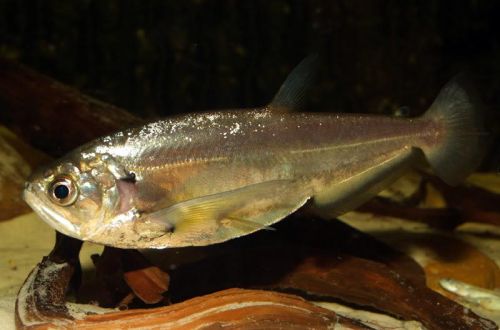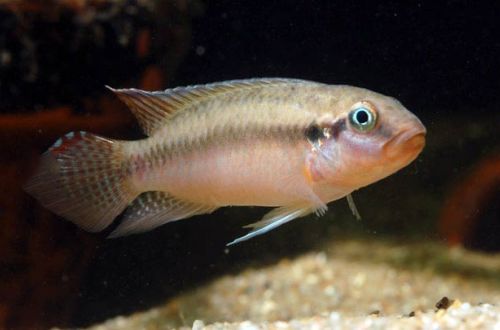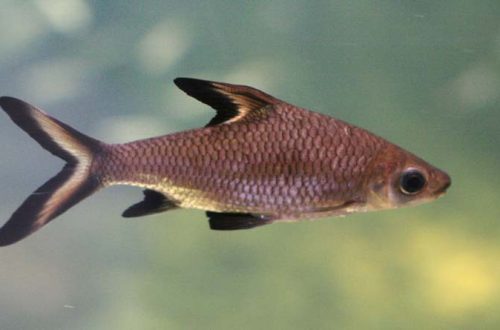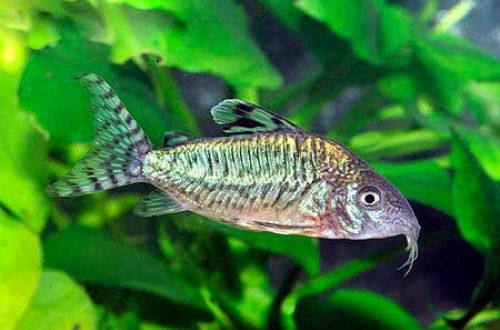
A tetra-vampire
The vampire tetra, scientific name Hydrolycus scomberoides, belongs to the Cynodontidae family. A true predator from the rivers of South America. Not recommended for beginner aquarists due to the complexity and high cost of maintenance.

Contents
Habitat
It comes from South America from the upper and central part of the Amazon River basin in Brazil, Bolivia, Peru and Ecuador. They inhabit the main river channels, preferring areas with a slow calm current. During the rainy season, as the coastline floods, they swim to water-covered areas of the rainforest.
Brief information:
- The volume of the aquarium – from 1000 liters.
- Temperature – 24-28°C
- Value pH — 6.0–8.0
- Water hardness – soft to medium hard (2-15 dGH)
- Substrate type — stony
- Lighting – moderate
- Brackish water – no
- Water movement – moderate or weak
- The size of the fish is 25-30 cm.
- Meals – live fish, fresh or frozen meat products
- Temperament – predator, incompatible with other smaller fish
- Content both individually and in a small group
Description
The maximum length of the fish caught was 45 cm. In an artificial environment, it is noticeably smaller – 25–30 cm. Outwardly, it resembles its close relative Payara, but the latter is much larger and almost never found in aquariums, however, they are often confused for sale. The fish has a massive stocky body. The dorsal and elongated anal fins are shifted closer to the tail. The pelvic fins are oriented parallel to the bottom and resemble miniature wings. Such a structure allows you to make rapid throws for prey. A characteristic feature that gave the name to this species is the presence of two long sharp teeth-fangs on the lower jaw, adjacent to many small ones.
Juveniles look slimmer, and the coloration is somewhat lighter. Swim with an inclination in the “head down” position.
Food
Carnivorous predatory species. The basis of the diet are other small fish. Despite predation, they can be accustomed to pieces of meat, shrimp, mussels without shells, etc. Young individuals will accept large earthworms.
Maintenance and care, arrangement of the aquarium
The optimal size of the aquarium for a small group of these fish starts from 1000 liters. Ideally, the design should resemble a riverbed with a substrate of sand and fine gravel and scattered large snags and boulders. Several unpretentious shade-loving plants from among anubias, aquatic mosses and ferns are attached to the decor elements.
The tetra vampire needs clean, running water. It is intolerant to the accumulation of organic waste, does not respond well to temperature changes and hydrochemical values. To ensure stable water conditions, the aquarium is equipped with a productive filtration system and other necessary equipment. Usually such installations are expensive, so the home keeping of this species is available only to wealthy aquarists.
Behavior and Compatibility
They can be either alone or in a group. Although predatory in nature, they are quite compatible with other species of a similar or larger size, however, any fish that can fit in the mouth of a Tetra Vampire will be eaten.
Fish diseases
In favorable conditions, health problems do not arise. Diseases are associated primarily with external factors. For example, in cramped conditions with high concentrations of pollution and poor water quality, diseases are inevitable. If you bring all the indications back to normal, then the well-being of the fish improves. If signs of the disease persist (lethargy, changes in behavior, discoloration, etc.), medical treatment will be required. Read more about symptoms and treatments in the Aquarium Fish Diseases section.





